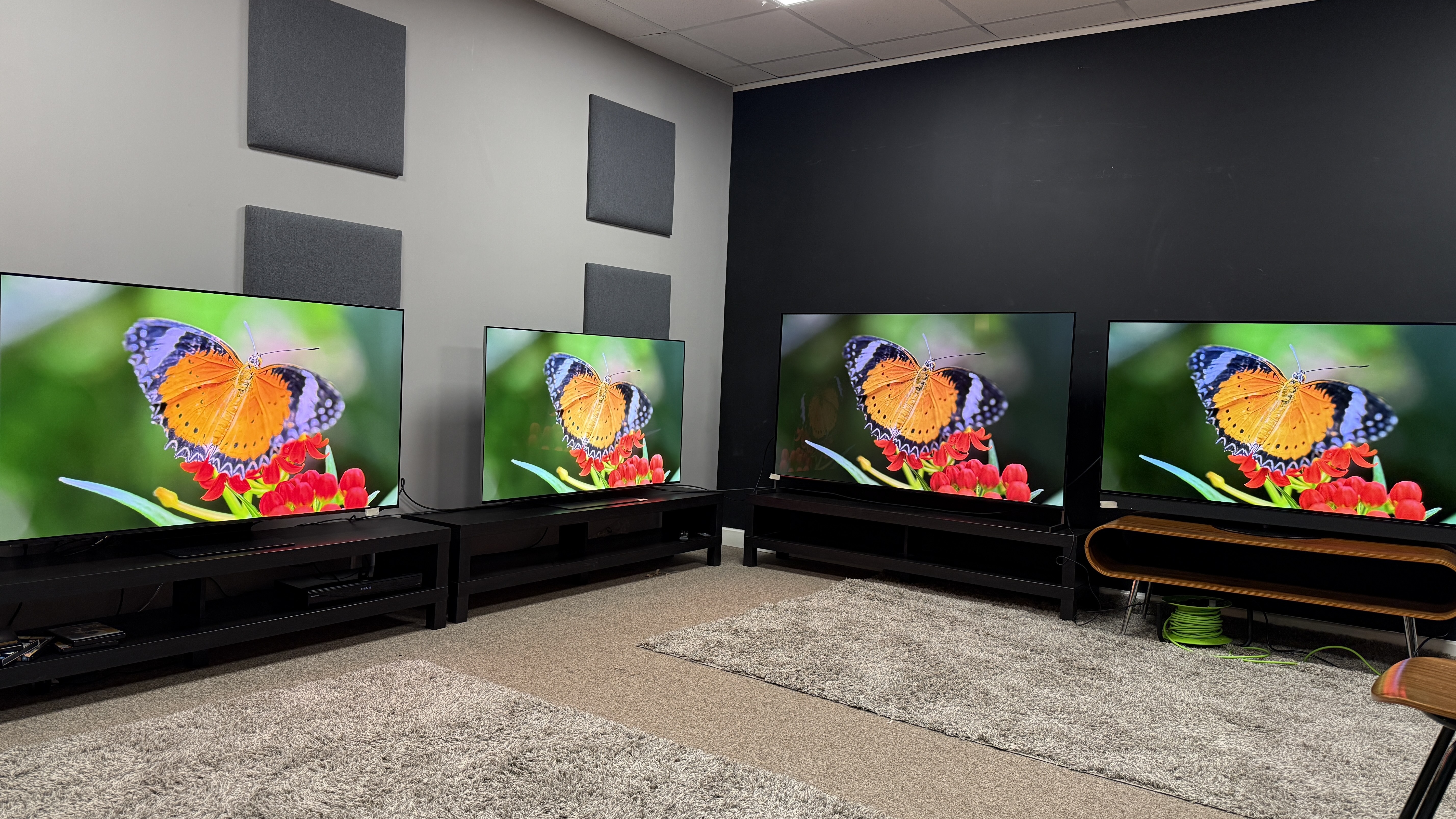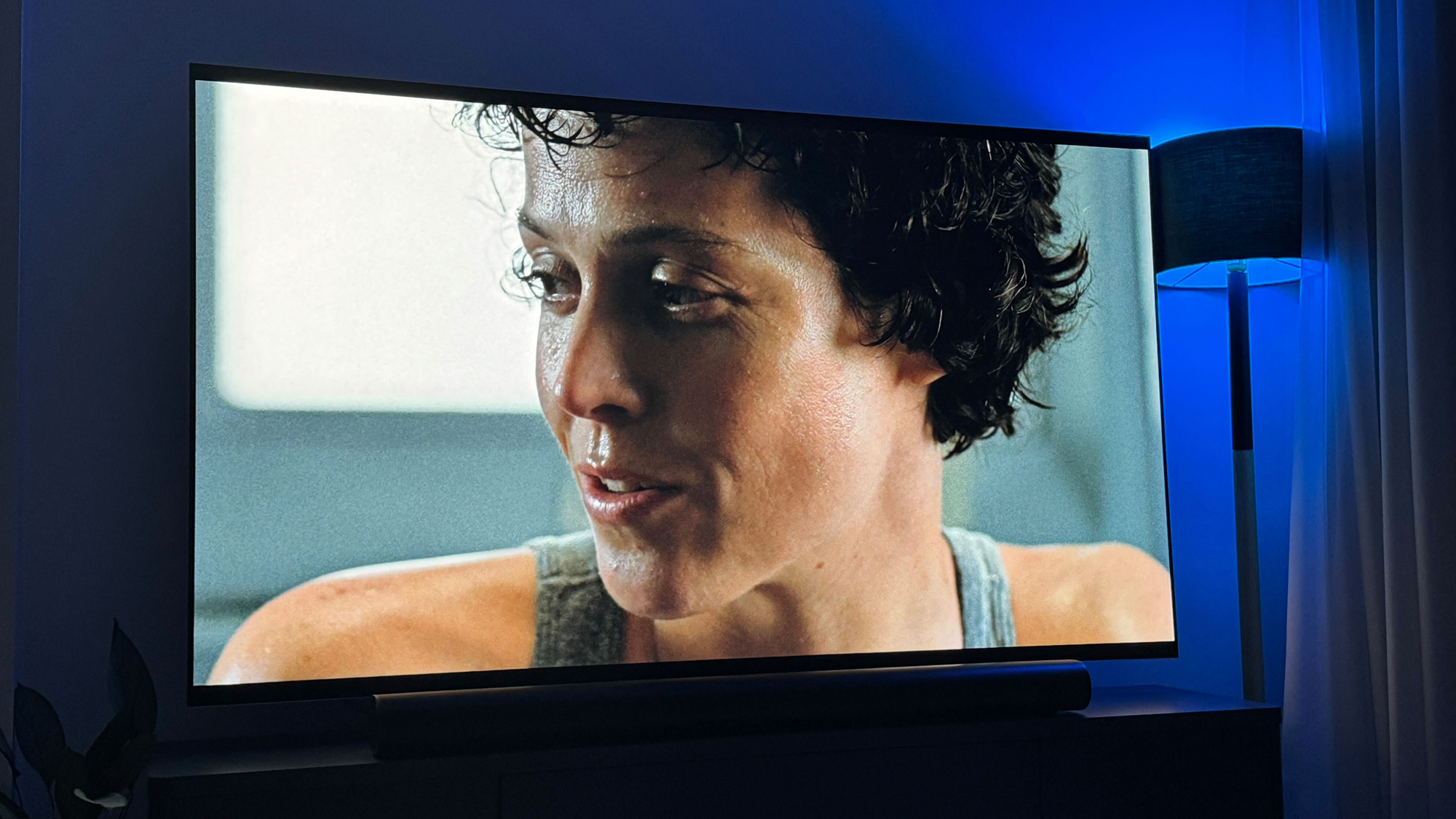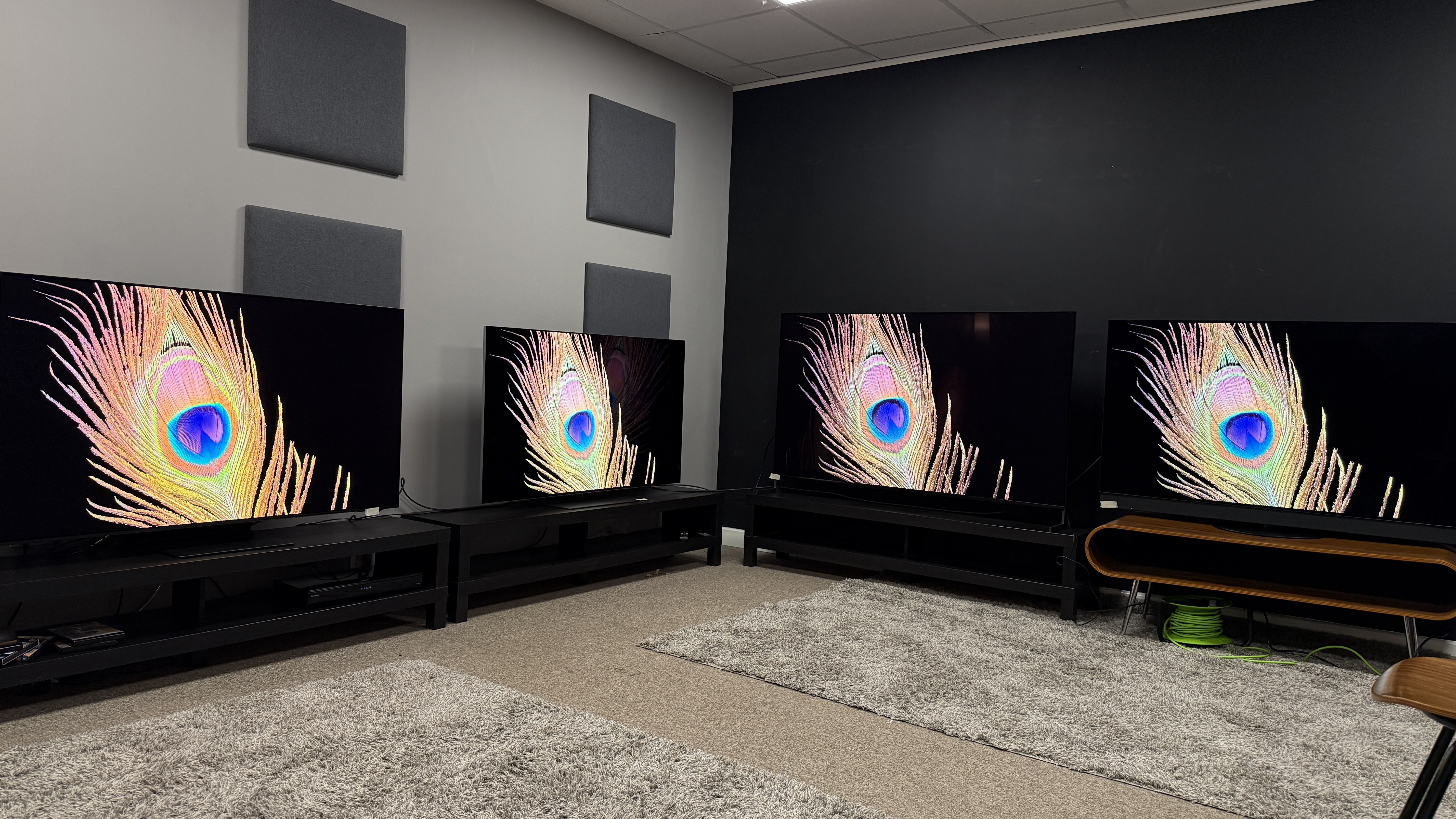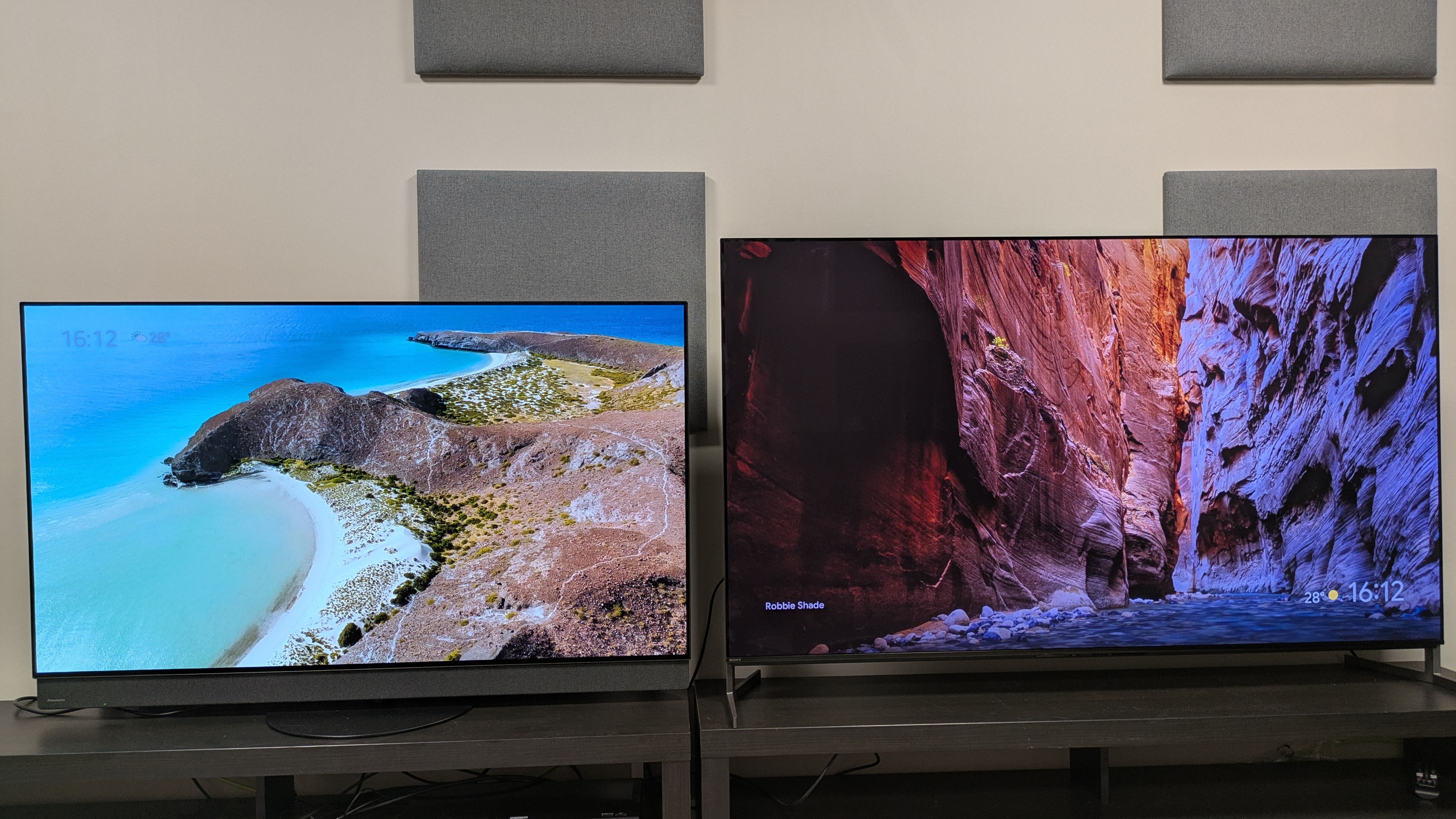The battle for the top OLED TV is more intense in 2025 – and this time it's not just about brightness

It’s no secret that LG and Samsung have been battling for the title of best OLED TV ever since Samsung returned to the OLED market with its QD-OLED display panel technology. In the meantime, other OLED TV brands such as Panasonic, Sony, and Philips in the UK lag behind the Korean giants when it comes to market share.
Why is this? LG and Samsung OLED TVs offer breathtaking picture quality, but so do OLED TVs from other brands. However, LG and Samsung also offer a wider range of features compared to their rivals, such as a better smart TV interface, more gaming features, and a sleeker design. LG and Samsung TVs seem to speak more directly to consumers.
This isn’t to say that Panasonic, Sony and Philips TVs are bad – far from it. The first two brands deliver some of the best TVs for sound year-on-year, and Philips has its unique Ambilight feature to set it apart from the crowd.
An area where LG and Samsung OLED TVs have had an advantage in recent years is in their picture brightness. OLED TVs used to be almost unwatchable in bright room lighting conditions. But recent LG and Samsung TVs have been brighter than their rivals, and Samsung’s innovative OLED Glare Free screen, first introduced on the Samsung S95D, one of the best TVs of 2024, also goes far to improve picture quality when viewing in bright rooms.
But it’s not just features and brightness that have set LG and Samsung OLEDs apart. Another major factor is price. LG and Samsung have been able to consistently deliver their OLED TVs at significantly lower prices than their rivals – until now.
Past pricing

LG and Samsung both released their flagship OLEDs, the LG G4 and Samsung S95D, in March 2024. The Panasonic Z95A was released in September 2024.
The 65-inch Z95A launched at $3,100 / £3,899, but the G4 and S95D 65-inch models were both available for roughly $2,600 / £2,600 by that time. While the Z95A had the advantage of a better built-in sound system and (arguably) better picture quality, it also had an inferior smart TV platform and lacked some of the gaming features found on the other two sets. It was a tough ask for people to pay more for the Z95A, especially in the UK, where there would’ve been a huge £1,200 price difference.
Sign up for breaking news, reviews, opinion, top tech deals, and more.
Sony’s flagship TV for 2024 was the Sony Bravia 9 mini-LED TV. Launched at $2,999 for the 65-inch model (the 65-inch Bravia 9 didn’t release in the UK until much later), it was a somewhat better value, but for some, opting for mini-LED over OLED wasn’t an option. As a result, LG and Samsung won the bang for your buck battle in 2024.
Present-day prices

Turning our attention to flagship OLED TVs in 2025, the LG G5 launched at $3,399 / £3,299 / AU$5,299 for its 65-inch model, and the Samsung S95F launched at a very similar price of $3,399 / £3,399 / AU$5,295 for its 65-inch model. Prices for both TVs then quickly dropped in anticipation of sales events such as Prime Day in July.
What we didn’t foresee happening was how aggressive Sony and Panasonic would go with their pricing. The Sony Bravia 8 II, a QD-OLED TV, launched at $3,499 / £2,999 / AU$4,999 for its 65-inch model, while the Panasonic Z95B launched at $3,399 / £2,999 for its 65-inch model. Those prices are nearly identical to the Samsung and LG competition.
At the time of writing, in mid-August 2025, pricing for these TVs is as follows:
- LG G5 65-inch: $2,999 / £2,699 / AU$5,295
- Samsung S95F 65-inch: $3,299 / £2,799
- Panasonic Z95B 65-inch: $2,999 / £2,799
- Sony Bravia 8 II 65-inch: $2,999 / £2,499 / AU$5,295
As you can see, in many cases, both the Panasonic Z95B and the Sony Bravia 8 II are the same price, if not cheaper than the LG G5 and Samsung S95F. This represents a significant shift from previous years, but it still raises the question: Are LG and Samsung TVs still the better value?
What you get

To say that opinion is divided on these TVs is an understatement. Two blind tests involving these four TVs were held in recent weeks: TechRadar’s showdown with a non-expert viewing panel and Value Electronics’ TV expert showdown. The results were very different, with TechRadar’s panel favoring the Samsung S95F and LG G5 due to their brightness and punchy color, and the TV experts favoring the Sony Bravia 8 II and Panasonic Z95B (although the S95F also did exceptionally well) for their SDR and HDR picture accuracy.
While the Z95B and Bravia 8 II may be missing some of the gaming features you’d find on the G5 and S95F – specifically 4K 165Hz support, four HDMI 2.1 ports and under-10ms input lag – you’re getting much better built-in speaker systems on the Z95B and Bravia 8 II.
I compared the Panasonic Z95B and Sony Bravia 8 II’s built-in sound side-by-side, and while the Z95B was the winner, both still trounced the built-in sound of the LG and Samsung models. With Panasonic and Sony, you may not need to invest in one of the best soundbars, saving you money, whereas a soundbar is recommended for LG and Samsung.
Yes, the LG and Samsung still have the edge when it comes to picture brightness out of the box. But elsewhere, I’ve found during my time with these four TVs that it’s a tightly knit contest when it comes to every other aspect of picture quality.
As we get further into 2025, I think there will be furious competition between these OLED TVs. LG and Samsung will need to watch their back, and as for the OLED TV of the year, that’s going to be a very difficult choice.
You might also like
- Flagship OLED TV showdown: Viewers saw LG, Samsung, Sony and Panasonic TVs in a blind test and chose their favorite
- I put LG's cheapest and flagship OLED TVs side-by-side to see what real differences there were – here's what I learned
- I tested one of the brightest OLED TVs you can buy – but all that brightness comes with a catch

James is the TV Hardware Staff Writer at TechRadar. Before joining the team, he worked at a major UK based AV retailer selling TV and audio equipment, where he was either telling customers the difference between OLED and QLED or being wowed by watching a PS5 run on the LG 65G2. When not writing about the latest TV tech, James can be found gaming, reading, watching rugby or coming up with another idea for a novel.
You must confirm your public display name before commenting
Please logout and then login again, you will then be prompted to enter your display name.